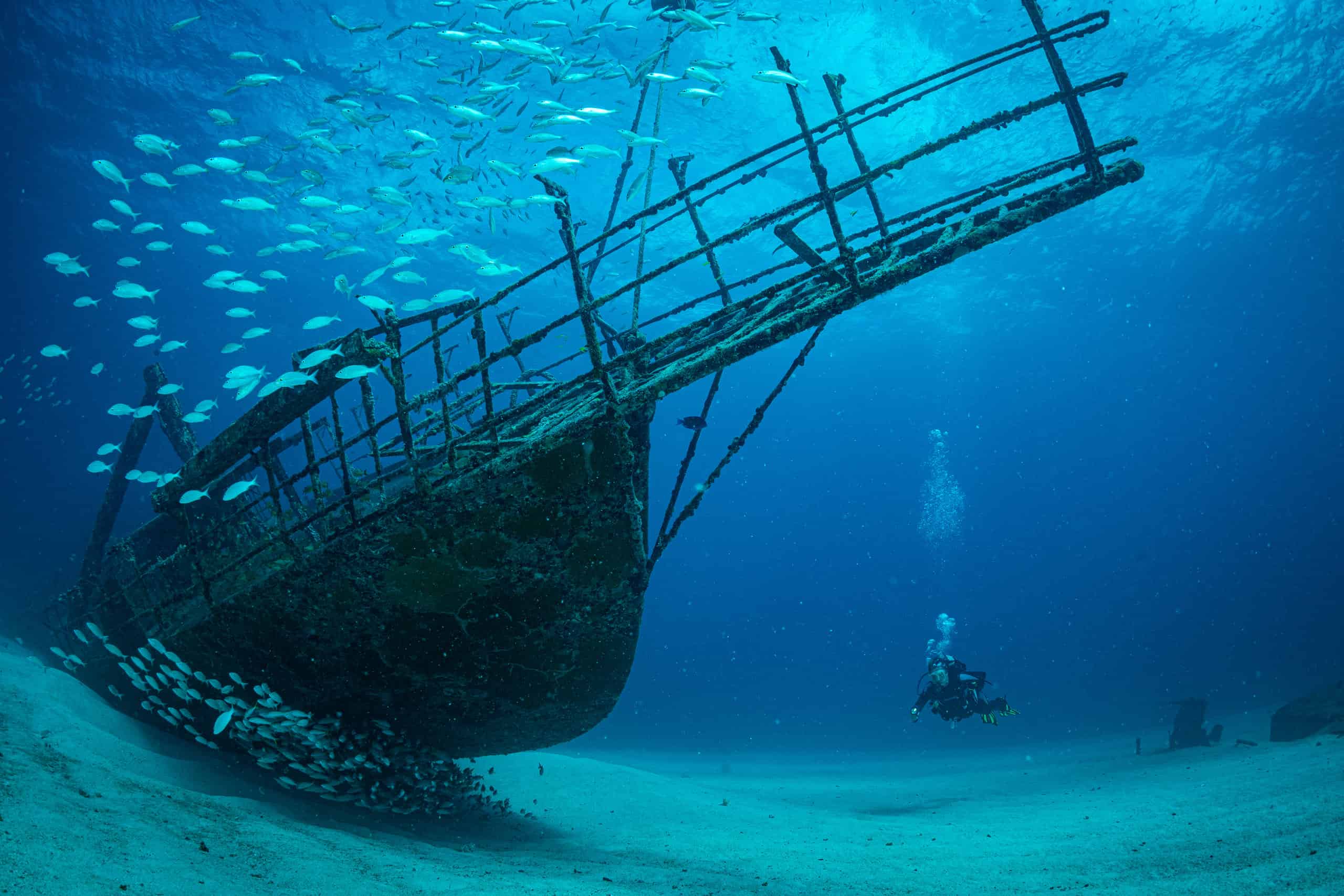Florida’s shipwrecks carry a trove of historical and scientific insights. The National Oceanic and Atmospheric Administration (NOAA) estimates that about 10,000 wrecks dot US waters, some resting untouched for centuries. These underwater vaults might harbor artifacts that illuminate long-forgotten eras and cultures. The quest to explore them melds archaeological rigor with the thrill of treasure hunting. Such a combination brings both scholars and adventurers to Florida’s shores.
Still, the romantic allure of shipwrecks shouldn’t overshadow their potential risks. Some continue to leak harmful substances, while “ghost nets” entangled in the ruins endanger both marine life and divers. As such, explorers must abide by stringent safety measures and regulations.
Whether you’re a diver, an environmentalist, or a history buff, Florida’s shipwrecks offer a layered adventure into realms both ancient and immediate, above and below the surface. Here are 13 devastating Florida shipwrecks from across the ages.

The de Luna expedition’s shipwrecks, buried under the ocean floor, were found over 400 years later with good old archaeological detective work and modern imaging technology.
©Vibe Images/Shutterstock.com
1. Emanuel Point III Shipwreck: 1559
Part of a fleet lost in a 1559 hurricane. Researchers discovered the ship under 7 feet of ocean sand in Pensacola Bay during the summer of 2016.
In 2016, researchers from the University of Western Florida discovered the Emanual Point III. Their belief was that the shipwreck belonged Tristan de Luna’s doomed 1559 expedition to colonize modern-day Florida. State archaeologists discovered Emanuel Point I in 1992. In 1996, the site earned a spot on the US National Register of Historic Places. It’s now a permanent part of Florida’s maritime history. It was until 2006 and 2016 did the University of West Florida researchers find the two remaining shipwrecks.
Beyond just the corpse of a ship, the Emanuel Point III is also an underwater trove of artifacts. Researchers have unearthed everything from wooden planks that composed the ship’s framework to Spanish ceramics and iron fixtures. Each item tells the story of the ambitions that propelled them toward an uncertain New World.

Silver and gold treasure from the Atocha shipwreck make it history’s second-biggest valuable shipwreck find.
©AACTV/Shutterstock.com
2. Nuestra Senora de Atocha Shipwreck: 1622
Sank in a hurricane off the Florida Keys, carrying a treasure trove of gold, silver, and precious stones.
The Nuestra Senora de Atocha is a name that conjures visions of sunken treasure and high-seas adventure. A hurricane off the Florida Keys wrecked this Spanish galleon in 1622. It spilled a fortune in gold, silver, and Colombian emeralds. The ship’s story is a blend of audacious ambition, ill-fated timing, and modern-day treasure hunting. These factors elevated it from maritime legend to the world’s second-most valuable shipwreck.
Set to deliver treasures like gold bars and handcrafted items to Spanish royalty, the Atocha was part of a fleet transporting New World spoils. However, its ill-timed voyage intersected with a lethal hurricane, sealing the fate of not only the crew but also Spain’s war coffers.
Decades later, the shipwreck captured the attention Mel Fisher, a treasure hunter whose 16-year quest was as perilous as the Atocha’s final journey. After overcoming legal battles and the loss of crew members, Fisher finally unearthed the ship. And inside the ship, he found and claimed an estimated $400 million in treasure. The haul, ranging from gold bars and silver bullion to colonial artifacts, offers a vivid snapshot of 17th-century colonial dynamics. Key West’s Mel Fisher Maritime Museum now houses many of these treasures, while others undergo authentication.
Yet the Atocha retains some unsolved mysteries. According to its manifest, a considerable portion of the treasure is still missing. Treasures likely still await discovery in the Keys’ pristine waters.
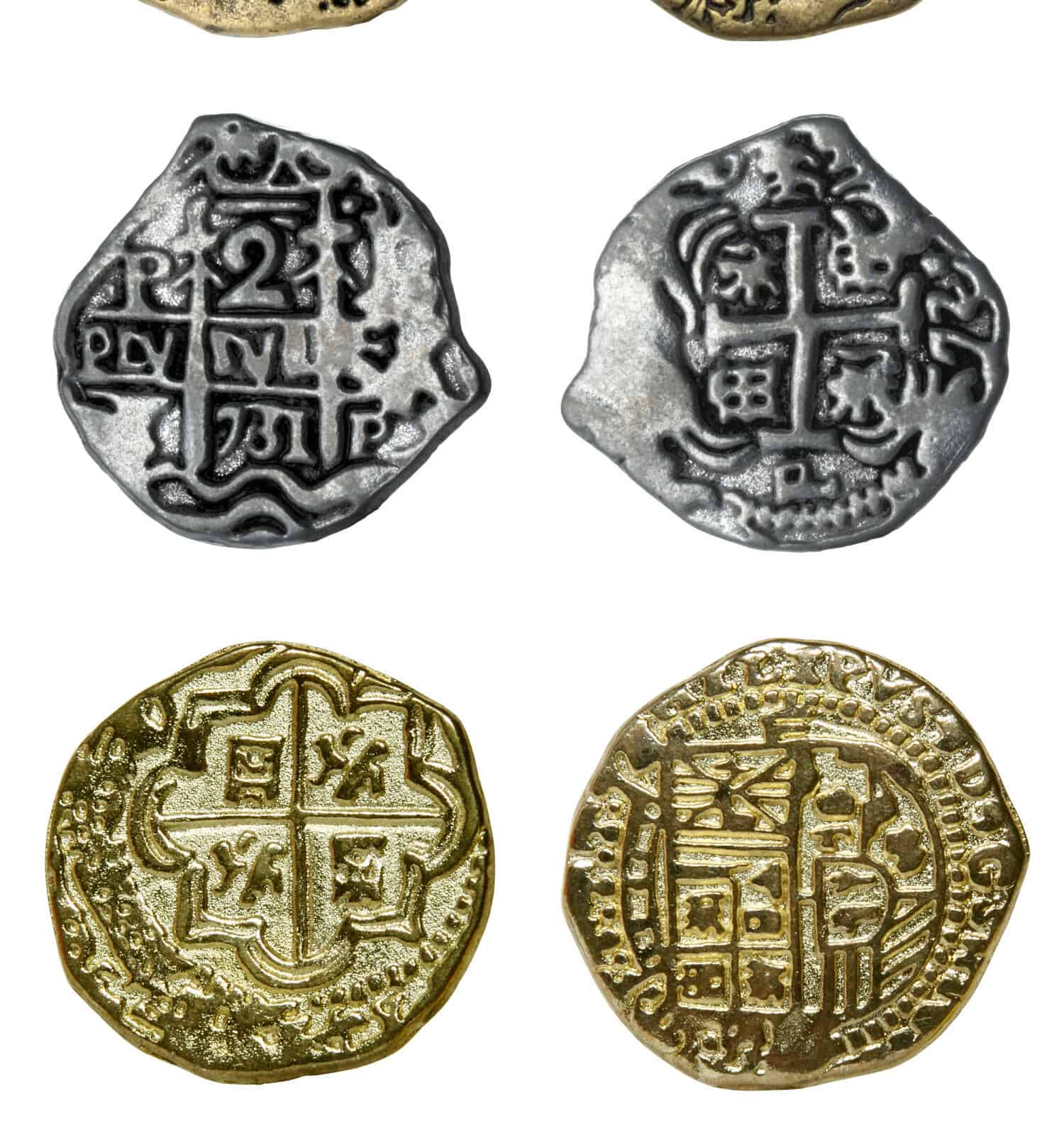
Among the findings of the shipwrecked Urca de Lima were Spanish “pieces of eight,” or the Eight Reales coin, the original Spanish Dollar.
©Myotis/Shutterstock.com
3. Urca de Lima Shipwreck: 1715
A powerful hurricane hit this Spanish Colonial cargo ship.
The Urca de Lima, a lesser known yet relic of maritime history, sank in a devastating 1715 hurricane off Florida’s coast. Bound from Havana to Spain as part of the 1715 Treasure Fleet, the ship carried a cargo of gold, silver, and gems. The cargo was intended to strengthen Spain’s imperial economy. The ship’s sinking reverberated through the empire, highlighting the perils and potential of New World endeavors.
As one of the first sites to earn the designation of an Underwater Archaeological Preserve by the state of Florida, the Urca de Lima has been a trailblazer in underwater excavation techniques. The unearthed artifacts range from Spanish silver “pieces of eight” and navigational instruments to daily necessities like cooking utensils. Together, they offer intimate glimpses into the lives of its crew and the broader cultural landscape of the 18th century. Interestingly, the site has also revealed Spanish and indigenous crafted goods. This illustrates the complex web of cross-cultural interactions central to colonial voyages.

Two divers at the San Pedro shipwreck.
©Ninth Life Photography/Shutterstock.com
4. The San Pedro Shipwreck: 1733
Historically significant Spanish galleon hit by a hurricane.
The San Pedro, a Spanish galleon that sank in a devastating 1733 hurricane off the Florida Keys, holds a unique place in maritime history. Originally launched from Havana and destined for Spain, the ship carried a diverse cargo. This ranged from agricultural products like hemp and tobacco to valuable silver bullion. Although early Spanish salvage missions recovered some silver, the shipwreck, lying just 18 feet below the surface, remains a significant Underwater Archaeological Preserve.
Excavations at the site have unearthed an array of artifacts, including Spanish silver coins and cannons marked by royal foundries. These discoveries shed light on the commercial and military forces driving Spanish colonialism. Remarkably, the wreckage has also become an artificial reef over nearly three centuries, teeming with corals, sponges, and fish.

Wood engraving of the USS Preble’s capture of the Mexican steamer Miramon in 1860.
©Library of Congress Control Number 2004665668 – Original / License
5. USS Preble Explosion: April 27, 1863
Commissioned in 1839, this sloop-of-war served in the Mexican American War before exploding off Pensacola in 1863.
Named after Commodore Edward Preble and commissioned in 1839, the USS Preble was a sloop-of-war that carved a versatile path through US maritime history. From the Labrador coast to the Mediterranean to a daring rescue for castaways off the coasts of Japan, the ship was a global presence. In 1850, authorities reassigned the Preble as a training vessel for midshipmen. During the Civil War, it repurposed again to join the Gulf Blockading Squadron in the Mississippi River. Despite retreating during intense conflict, it played a significant role in the Union blockade. Tragically, the ship’s distinguished career came to an end on April 27, 1863. It was then that a catastrophic fire triggered an explosion while the ship was stationed in Pensacola Bay.
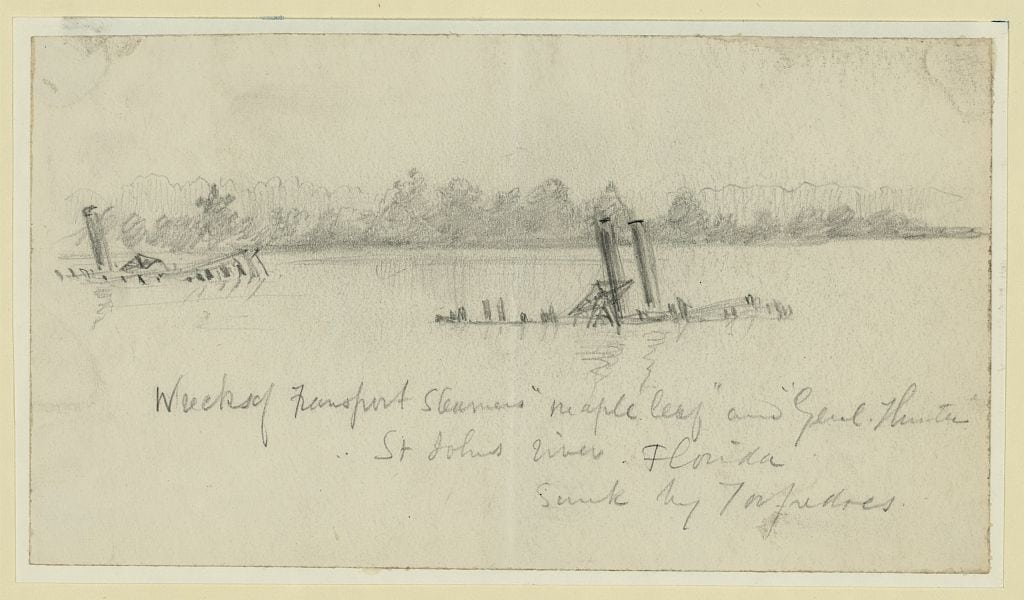
Illustration of “torpedoed” Transport Steamers “Maple leaf” and “Genl. Hunter” on the St. Johns river.
©Waud, Alfred R. (Alfred Rudolph), 1828-1891, artist – Original / License
6. Maple Leaf Sinking: April 1, 1864
While transporting Union soldiers and supplies, this American Civil War troopship struck a Confederate naval mine in the St. Johns River near Jacksonville, killing 17 and sinking the vessel.
Launched in 1851 as a, the Maple Leaf began as a freight and passenger carrier on the Great Lakes. During the American Civil War, the Union Army repurposed the paddlewheel steamship for transporting troops and supplies. On April 1, 1864, it hit a Confederate naval mine, also known as a “torpedo,” in the St. Johns River near Jacksonville. The explosion claimed 17 lives and sent the Maple Leaf to a watery grave. It was the first mine casualty of the Civil War.
Rediscovered in 1984 in remarkably preserved condition, the shipwreck immediately captured the fascination of historians and maritime archeologists. Its significance has earned it a designation as a National Historic Landmark and the National Park Service lauds it as the most vital repository of Civil War artifacts ever found.
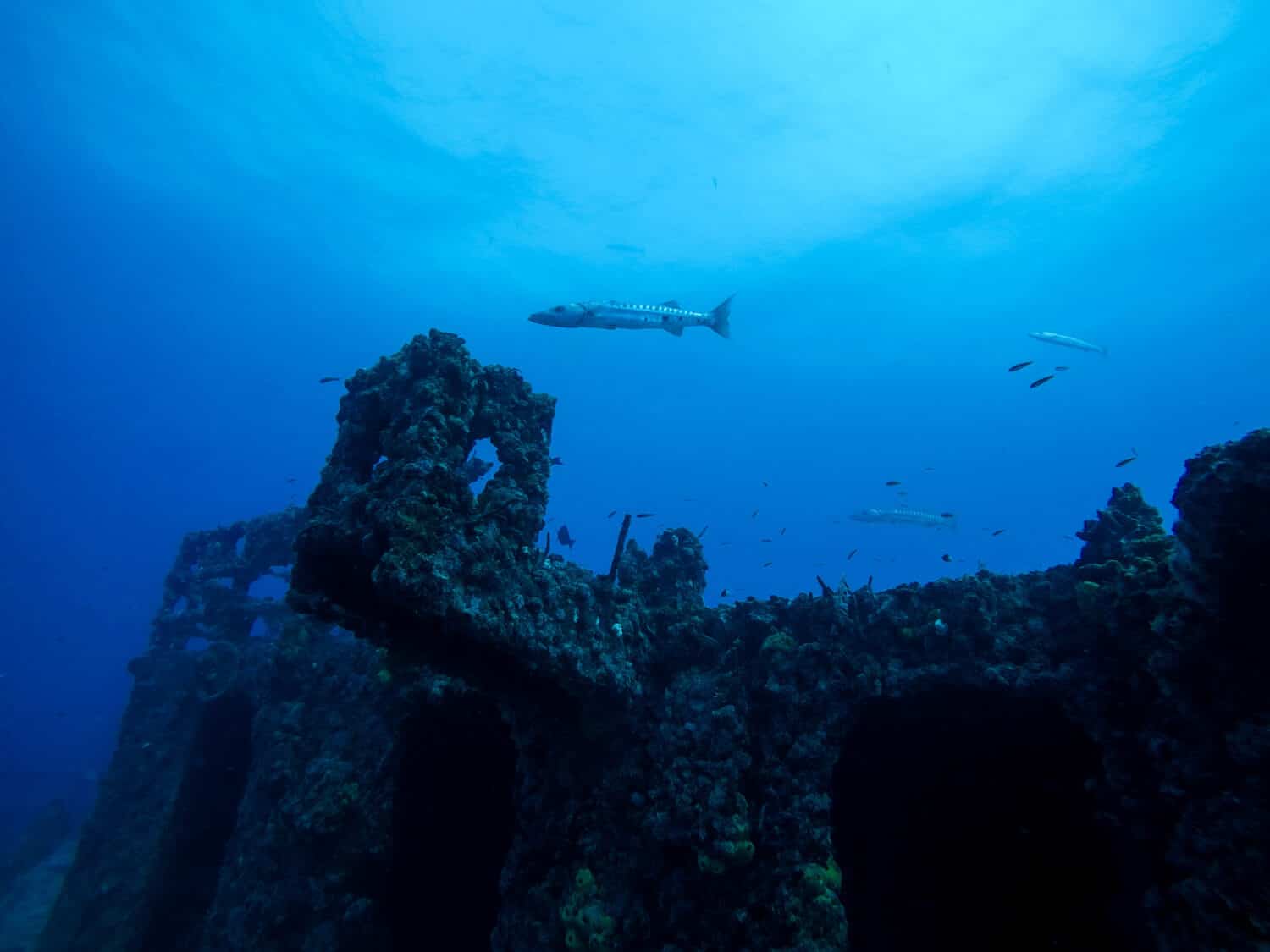
Lost but not forgotten, the Lofthus represented an increasingly global world.
©Dead reckoning/Shutterstock.com
7. Lofthus Incident: February 4, 1898
An English-made iron-hulled cargo ship that ran aground on a Florida beach while carrying lumber near Boynton Beach.
This late 19th-century iron-hulled vessel isn’t just a shipwreck but a multifaceted narrative encompassing technology, global trade, and environmental evolution. Originally christened as Cashmere in England, the ship first sailed for the East Indian trade. There, it become a cornerstone in the era’s expanding global commerce. Later acquired by a Norwegian company and renamed the Lofthus, the ship refocused its efforts on American trade routes.
In 1898, while in route to Buenos Aires, a devastating storm drove the ship aground off Florida’s coast. Fortunately, the Coast Guard was able to rescue both crew and animals. But the lumber cargo and the vessel itself became irretrievable losses.
Today, the Lofthus holds dual recognition. It’s designated as a Florida Underwater Archaeological Preserve and listed on the US National Register of Historic Places since 2004.
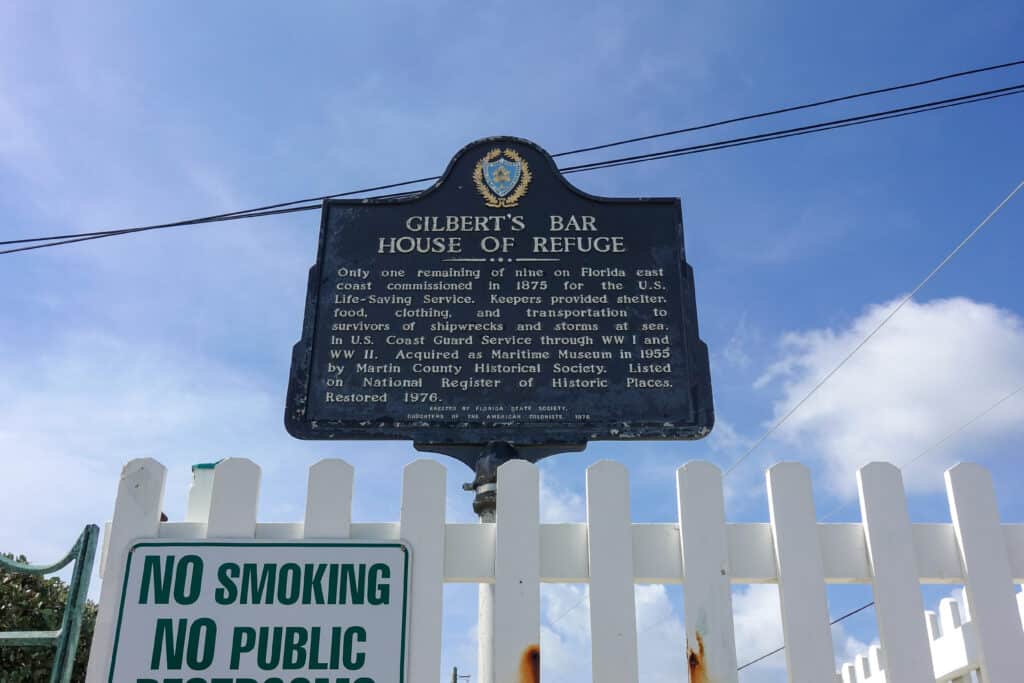
Gilbert’s Bar House of Refuge Museum in Stuart is the only remaining shipwreck life-saving stations on Florida’s Atlantic Coast. Crew members from the Georges Valentine likely sought succor there in 1904.
©Joni Hanebutt/Shutterstock.com
8. Georges Valentine Shipwreck: October 16, 1904
Italian barkentine Georges Valentine sank on October 16, 1904, just off Stuart.
Like the Lofthus, it was also enroute to Buenos Aires. Laden with mahogany and cedar, the ship met with a ferocious nor’easter. Despite valiant efforts to navigate the storm, the ship crashed into nearby reefs, resulting in the loss of five crew members.
The wreck of the Georges Valentine became a case study in the vulnerabilities of early 20th-century global trade. Destined for South American construction and furniture industries, the loss of its timber cargo represented not just a logistical but also a financial blow, underlining the precarious nature of supply chains even then.
In its afterlife, the ship has morphed into an ecological oasis. Designated an Underwater Archaeological Preserve, it rests just 15 to 20 feet deep. There, it provides sanctuary to a colorful array of corals and marine species.

Like many near-shore shipwrecks, the SS Tarpon has a second life as an artificial reef.
©Kichigin/Shutterstock.com
9. SS Tarpon Sinking: August 31, 1937
The steamship suffered from overloading during strong winds and sank as a result.
Built in 1887 as the Naugatuck, it underwent several ownership changes before becoming the Tarpon in 1903. Captained by Willis Barrow for more than 30 years, the vessel left Mobile, Alabama, overloaded with cargo. It sank off Panama City on August 31 to September 1, 1937. Despite the crew’s efforts, which included jettisoning the cargo, the debacle resulted in the deaths of 18 of the 31 souls onboard.
Though the Coast Guard had marked the Tarpon’s final resting place in 1939, its excavation had to wait until after World War II. In the late 1940s and 1950s, fishermen and divers were able to locate the wreck. The Tarpon gained a second life as Florida’s sixth Underwater Archaeological Preserve. Further, it earned a spot on the US National Register of Historic Places in 2001. Now an artificial reef teeming with life, the site offers divers an immersive experience that mixes history and ecology.
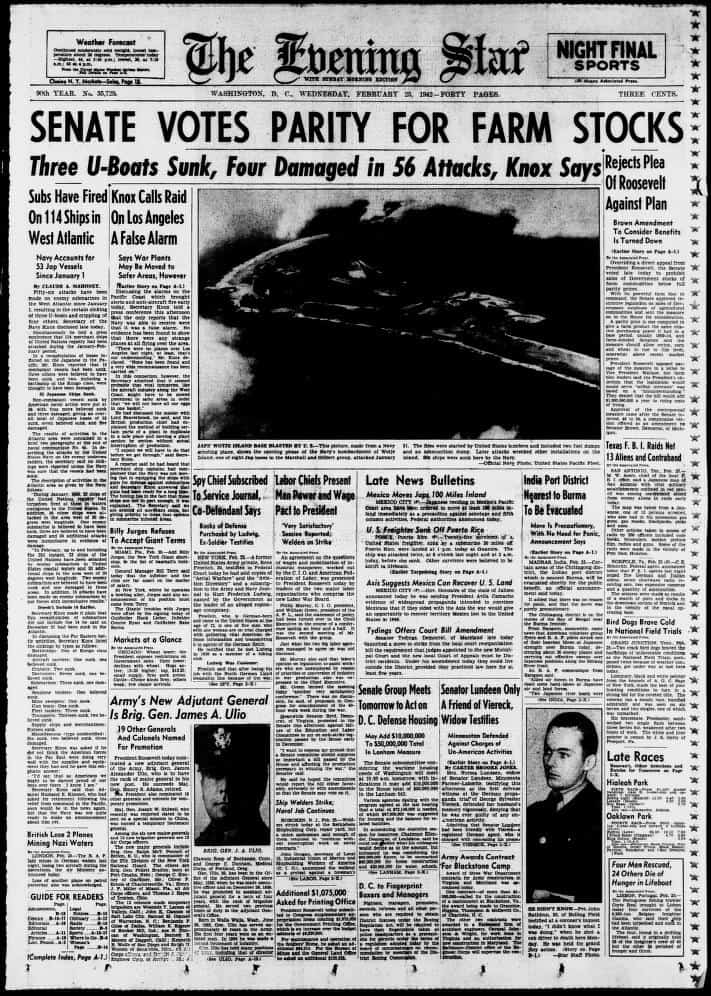
As the Evening Star newspaper’s front page February 25, 1942, made clear, civilian ships were often caught in the crossfire during World War 11. Cities Service Empire was one of them.
10. Cities Service Empire Attack: February 22, 1942
Struck by two torpedoes from U-128 off Cape Canaveral, the tanker caught fire, broke in two, and sank.
On February 22, 1942, the American steam tanker Cities Service Empire sailed near Cape Canaveral and fell victim to an attack by German U-boat U-128. This maritime drama became a grim testament to World War II’s far-reaching impacts. Further, it exposed the vulnerabilities of merchant vessels and the risks both naval and civilian personnel faced.
Hit by two torpedoes from the U-boat, fire quickly consumed the ship. Crew members barely had time to scramble onto life rafts before an explosion tore the vessel apart. The ship sank into 240 feet of water.
The arrival of the US Coast Guard cutter USS Vigilant briefly brought hope for the distressed crew. However, before the rescue could be completed, a final explosion claimed 14 lives. The lost included the ship’s master and several armed guards. Another US Navy vessel later rescued the remaining 36 survivors.
Nautical author and historian Eric Wiberg explained to A-Z Animals via email that a view from both sides gives a fuller picture, by looking at both “UBOAT Patrols and SURVIVOR statements.” To this end, Wiberg pointed to U-128’s Ulrich Heyse and public and declassified primary documents related to survivor statements.
Today, the Cities Service Empire lies submerged, its twisted wreckage forming a solemn underwater memorial. One theory suggests that the Germans may have mistaken the civilian ship for a submarine, but these speculations remain unconfirmed. Further historical investigation is needed to unravel this maritime mystery.

Not long after leaving Port St. Joe, the Vamar mysteriously capsized.
©NSC Photography/Shutterstock.com
11. Vamar Suspicious Sinking: March 21, 1942
Originally launched in 1919 as the Royal Navy gunboat HMS Kilmarnock, this vessel underwent numerous transformations, name changes, and questionable ownership before its mysterious sinking on March 21, 1942.
In 1933, the ship was renamed Vamar and then sold to the Bolivar-Atlantic Navigation Company in 1941. The ship suspiciously capsized and sank off Mexico Beach in 25 feet of water after leaving Port St. Joe. It was laden with lumber bound for Cuba—not Buenos Aires, this time. Interestingly, the Vamar was a melting pot of global influences then. It was owned by the Bolivar-Atlantic Navigation Company, flying the Panamanian flag, and crewed by men from Yugoslavia, Cuba, and Spain. Already in poor condition, the vessel was a disaster waiting to happen, with no radio operator and subpar equipment.
The intrigue didn’t end there. Surviving crew members lingered suspiciously in Port St. Joe, attracting local attention. Against the backdrop of World War II, the Coast Guard launched an investigation. They explored theories from intentional scuttling to sabotage, but found no conclusive evidence. The ship’s enigmatic end, against the backdrop of calm waters and ignored warnings, fuels ongoing speculation about whether it was a victim of human error or deliberate action.
Today, the Vamar lies in just 25 feet of water as a State Underwater Archaeological Preserve. More than just a haunting dive spot, the wreck serves as a maritime monument that invites us to delve into the complex interplay between World War II’s broader intricacies and the enduring mysteries of human action and error.

The SS Gulfamerica attack quickly resulted in the war protocol of coastal city blackouts as a deterrence against U-boat attacks.
©hpphtns/Shutterstock.com
12. SS Gulfamerica Attack: April 10, 1942
Torpedoed by U-123 off Jacksonville on its maiden voyage, the tanker became another grim marker of World War II’s impact on American waters.
On the night of April 10, 1942, just off the coast of Jacksonville, the SS Gulfamerica became a tragic symbol of America’s vulnerability in World War II. Embarking on its maiden voyage, the American steam tanker carried furnace oil. A torpedo from the German U-123 submarine slammed into its starboard side, igniting a blaze that doomed the ship.
What set this incident apart was the restraint that U-123’s commander, Kapitänleutnant Reinhard Hardegen, showed. While he could have fired additional torpedoes, he held back, cognizant that stray munitions could imperil the civilian population ashore. It was a rare instance of humanity amid the otherwise ruthless submarine warfare against merchant ships.
Despite Hardegen’s restraint, the situation was a deadly one. Of the crew and armed guards, 19 perished. US Coast Guard patrol boats eventually rescued the survivors. But the loss served as a stark reminder of the war’s extended reach. Eventually, U-123 escaped. However, the encounter prompted a swift reevaluation of American coastal security. The tragedy resulted in the implementation of coastal blackouts that would ultimately decrease U-boat attacks near American shores.
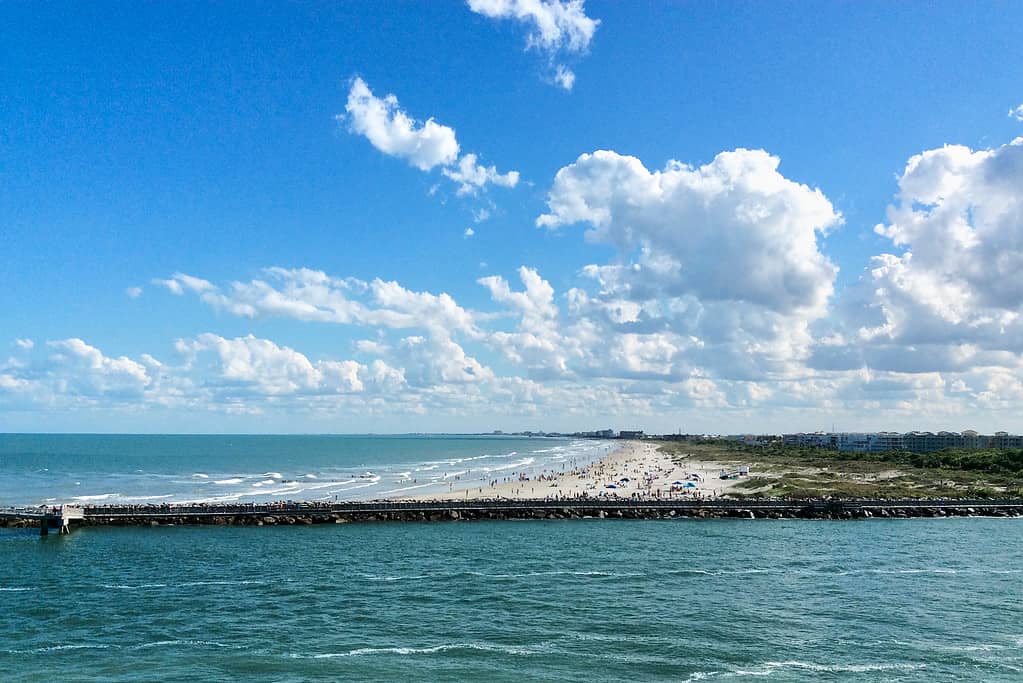
On its maiden voyage, the British Liberty ship SS Ocean Venus met an untimely end off of Cape Canaveral when a German U-boat torpedoed it.
©iStock.com/Martseniuk
13. SS Ocean Venus Attack: May 3, 1942
Torpedoed by U-564 12 nautical miles off Cape Canaveral. The unescorted vessel sank, resulting in the loss of five crew members.
On the morning of May 3, 1942, the Ocean Venus, a British Liberty ship on her inaugural voyage, navigated the waters off Cape Canaveral. As a product of the Lend-Lease Act, the ship symbolized British-American cooperation during World War II. Wiberg noted in his article on event, “What was left of the Ocean Venus hull was wire-dragged and exploded by the US Navy and Coast Guard, probably with input from the Army Corps of Engineers, after the war.” Via email, he pointed to declassified survivor statements that bring events to life.
Liberty ships, and later on, Victory ships, were pivotal in bolstering the British navy during the war. Constructed in American shipyards from California to Maine, these coal-fired vessels adapted to Britain’s oil scarcity. The Ocean Venus was one of sixty “Ocean” class ships, each an emblem of united resistance against the Axis powers.
Modern Shipwrecks: Why They Are Rare
The scarcity of modern shipwrecks owes much to advancements in technology, rigorous regulations, and enhanced emergency protocols.
Tech Innovations
High-accuracy GPS, radar, and sonar systems minimize navigational errors and collision risks. Automatic Identification Systems (AIS) and real-time weather forecasting further optimize safety.
Regulatory Oversight
The International Maritime Organization (IMO) enforces stringent safety standards, while Port State Control Inspections ensure that ships meet international norms. Additionally, skippers and crews undergo comprehensive training and certification.
Emergency Response
Improved Search and Rescue (SAR) technologies, international coordination, and well-inspected safety gear like lifeboats and life vests boost emergency response effectiveness.
Specialized Vessels
Double-hulled tankers reduce oil spill risks, while icebreakers and dedicated routes make icy waters navigable.
Despite these measures, maritime activities remain inherently risky due to the sea’s unpredictability. Nevertheless, the integrated approach of technology, regulation, and emergency response has significantly bolstered modern seafaring safety.
Conclusion
The seas off the coast of Florida contain time capsules in the form of shipwrecks that preserve pivotal moments in human history. From the Emanuel Point III, which encapsulates Spain’s early attempts to colonize North America, to the SS Gulfamerica and SS Ocean Venus, unfortunate witnesses to the expansive theatre of World War II, each shipwreck tells a complex story. Some were victims of nature’s fury, while others succumbed to the calamities of war, economic pursuits, or simply human error. The narratives these sunken ships unfurl often reveal a complex interplay between geopolitics, commerce, and nature.
As technology advances, who knows what other sunken tales may be unearthed from the ocean floors? After all, over seventy percent of our planet’s surface is water. Thus, whether you’re a history buff, marine biologist, ethical debater, or simply a curious soul, the shipwrecks off Florida’s coast offer a multi-faceted look into our collective past. As such, they invite us all to dive a little deeper— literally, metaphorically, and perhaps in the near-future also virtually.
Summary Table of Florida Shipwrecks
| Ship Name | Date of Sinking | Owner at Time of Sinking | Part of Florida Underwater Archaeological Preserves? |
|---|---|---|---|
| Emanuel Point III | 1559 | Spanish Crown | No |
| Nuestra Senora de Atocha | 1622 | Spanish Crown | No |
| Urca de Lima | 1715 | Spanish Crown | Yes |
| San Pedro | 1733 | Spanish Crown | Yes |
| USS Preble | April 27, 1863 | United States Navy | No |
| Maple Leaf | April 1, 1864 | United States (Union during Civil War) | No |
| Lofthus | February 4, 1894 | Norwegian Company | Yes |
| Georges Valentine | October 16, 1904 | Italian Ownership | Yes |
| SS Tarpon | August 31, 1937 | Private | Yes |
| Cities Services Empire | February 22, 1942 | United States | No |
| Vamar | March 19, 1942 | United States | Yes |
| SS Gulfamerica | April 11, 1942 | United States | No |
| SS Ocean Venus | May 3, 1942 | British Government | No |
Thank you for reading! Have some feedback for us? Contact the AZ Animals editorial team.

